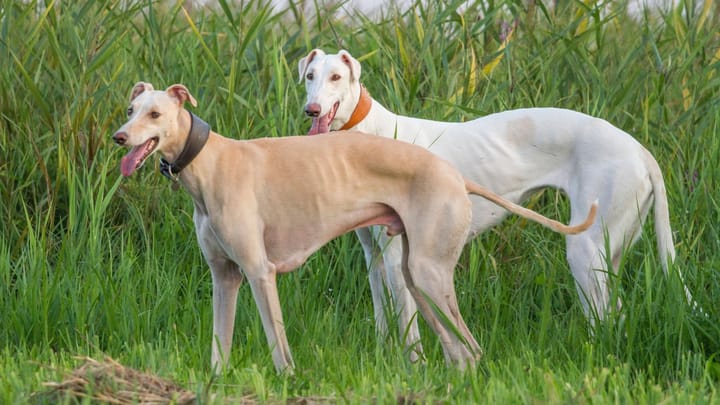Polish Greyhound
Other names : Polish Sighthound, Chart Polski

While she may look just like a normal greyhound, the Polish Greyhound is a distinct breed and character in her own right. Developed and celebrated over hundreds of years as a hunter of birds and pet of the Polish nobility, this svelte and graceful creature comes with somewhat more bite than those greyhounds more familiar to British dog-lovers. She’s more protective and territorial, and not keen on the society of other dogs. Still, she’s loyal to her humans, kind to children, and available in a host of colours to compliment your sofa suite, so she should certainly be a candidate for those in the market for a family sighthound.
|
Life expectancy |
The Polish Greyhound has a life expectancy of between 13 and 15 years |
|
Temperament |
|
|
Size |
Large
|
|
Adult size |
Female
Between 27 and 30 in
Male
Between 28 and 31 in
|
|
Adult weight |
Female
Between 77 and 99 lb
Male
Between 77 and 99 lb
|
|
Coat colour
Any. |
Black White Brown Blue Red Sand |
|
Type of coat
Springy and harsh. |
Short Hard |
|
Eye colour
Amber to dark brown. |
Brown
|
It can take quite a while to obtain a Polish Greyhound pup outside of her native land.
More details about the Polish Greyhound
Polish Greyhound: Origins and history
The Polish Greyhound seems to have developed from Saluki-type Asiatic sighthounds and traces her history back to at least the 13th century, where she is described (but not yet named) in paintings and writings. The trials of the nineteenth and twentieth century took their toll on the breed, but the concerted efforts’ of one male (Elbrus) with two females (Taiga and Struska) in the latter half of the twentieth century delivered a comeback for the Polish Greyhound.
Physical characteristics of the Polish Greyhound
A little taller and stronger than many a sight hound, the Polish Greyhound is an altogether more imposing presence than her cousin breeds. Her jaw, stretching out under a muzzle that’s as long as the rest of her head, is powerful. Her eyes are narrow, keen, and alert. Her long neck carries her head high, and leads back to a deep chest and dramatically tucked belly. Her legs are long, oh so long, and muscular, yet lean, as befits this altogether poised and dignified hunter.
FCI classification of the Polish Greyhound
-
Group 10 - Sighthounds
-
Section 3 : Short-haired Sighthounds
Polish Greyhound: Characteristics
Polish Greyhound: Behaviour
Training a Polish Greyhound
She can be distracted by hunting opportunities, so firm and patient training is a must.
Polish Greyhound: Lifestyle
Breed compatibility Polish Greyhound
Polish Greyhound: Purchase price
We do not have enough data to set an average price. Looking after a dog of this size typically costs between £80 to £120 a month, including food, medical/insurance, and incidental expenses.
Polish Greyhound: Shedding
Average
Not very much.
Polish Greyhound: Grooming
A weekly brushing and an attentive eye on her ears should keep her in good nick.
Polish Greyhound: Health
She tends not to suffer from genetic complaints, and has an average life expectancy of 14 years.
This dog is stronger and more robust than she may seem from a distance; she’s a hardy hunter capable of long days of serious outdoors work.
She shouldn’t stay out in the heat too long, or overexert herself.
She’s fine in bad weather, but shouldn’t sleep outside.
Like most greyhounds, excessive weight gain is rare.
- Gastric torsion (bloat)
- Cardiomyopathy


